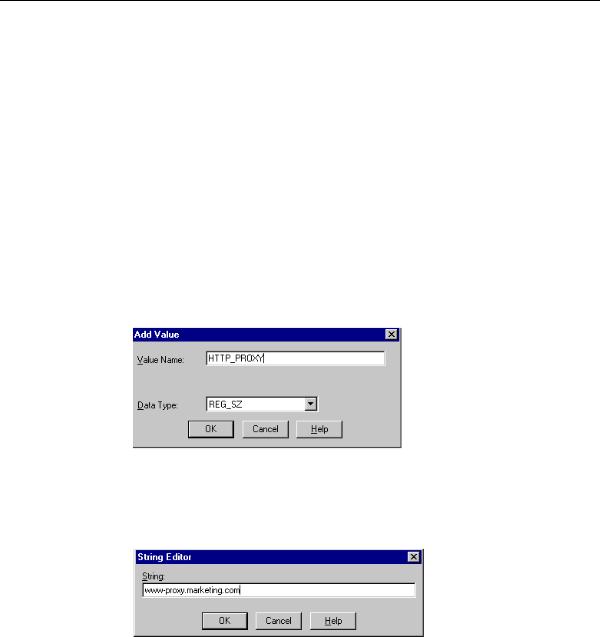
СУБД Oracle / Литература / Oracle 9.0.1 / A90163_01
.pdf
Building External Procedures
Building External Procedures
This section describes how to create and use external procedures on Windows. The following files are located in ORACLE_BASE\ORACLE_HOME\rdbms\extproc:
■extern.c Code example shown in "Task 2: Writing an External Procedure"
■make.bat Batch file that builds the dynamic link library
■extern.sql Automates the instructions described in "Task 4: Registering an External Procedure" and "Task 5: Executing an External Procedure"
External Procedures Overview
External procedures are functions written in a third-generation language (C, for example) and callable from within PL/SQL or SQL as if they were a PL/SQL routine or function. External procedures let you take advantage of the strengths and capabilities of a third-generation programming language in a PL/SQL environment.
Note: Oracle also provides a special purpose interface, the call specification, that lets you call external procedures from other languages, as long as they are callable by C.
The main advantages of external procedures are:
■Performance, because some tasks are performed more efficiently in a third-generation language than in PL/SQL, which is better suited for SQL transaction processing
■Code re-usability, because dynamic link libraries (DLLs) can be called directly from PL/SQL programs on the server or in client tools such as Oracle Forms
Developing Applications for Windows 10-7

Building External Procedures
You can use external procedures to perform specific processes:
■
■
■
Solving scientific and engineering problems
Analyzing data
Controlling real-time devices and processes
To create and use an external procedure, perform the following sequential steps:
■
■
■
■
■
Task 1: Installing and Configuring
Task 2: Writing an External Procedure
Task 3: Building a DLL
Task 4: Registering an External Procedure
Task 5: Executing an External Procedure
Note: You must have a C compiler and linker installed on your system to build DLLs.
Attention: You can combine the instructions described in the fourth and fifth tasks into one SQL script that automates the task of registering and executing your external procedure. For an example of a SQL script that combines these steps, see
ORACLE_BASE\ORACLE_HOME\rdbms\extproc\extern.sql
Task 1: Installing and Configuring
This section describes the installation and configuration of the Oracle9i database and Oracle Net.
Installing the Oracle9i Database
Follow the steps in your Oracle9i Database installation guide for Windows to install these products on your Windows server:
■Oracle9i Enterprise Edition, Oracle9i Standard Edition, or Oracle9i Personal Edition. Each type contains PL/SQL, from which external procedures are called, and the PL/SQL external procedure program (EXTPROC), which runs external procedures.
10-8 Oracle9i Database Getting Started

Building External Procedures
■
■
■
Oracle Net Client
Oracle Net Server
Oracle Protocol Support
Configuring Oracle Net
If you install Oracle Net Server from your CD-ROM, then your server network files are automatically configured to use external procedures.
When PL/SQL calls an external procedure, the Oracle Net Listener starts a session-specific process called EXTPROC. Through Oracle Net, PL/SQL passes the following information to EXTPROC:
■
■
■
DLL name
External procedure name
Parameters (if necessary)
EXTPROC then loads the DLL and starts the external procedure.
If you copy your server network files into your Oracle9i network files directory, then you must manually configure the following files for the external procedure behavior described previously to occur:
■
■
ORACLE_BASE\ORACLE_HOME\network\admin\listener.ora
ORACLE_BASE\ORACLE_HOME\network\admin\tnsnames.ora
See the Oracle9i Net Services Administrator’s Guide for instructions.
Note: The sqlnet.ora file requires no changes. By default, the values for the parameters NAMES.DEFAULT_DOMAIN and NAME.DEFAULT_ZONE are set to world. These values match with the .world extension on the end of EXTPROC_CONNECTION_DATA in the tnsnames.ora file.
Task 2: Writing an External Procedure
Using a third-generation programming language, you can write functions to be built into DLLs and started by EXTPROC. The following is a simple Microsoft Visual C++ example of an external procedure:
Developing Applications for Windows 10-9

Building External Procedures
Note: Because external procedures are built into DLLs, they must be explicitly exported. In this example, the DLLEXPORT storage class modifier exports the function FIND_MAX from a dynamic link library.
#include <windows.h> #define NullValue -1 /*
This function tests if x is at least as big as y. */
long __declspec(dllexport) find_max(long x, short x_indicator,
long y,
short y_indicator, short *ret_indicator)
{
/* It can be tricky to debug DLL’s that are being called by a process that is spawned only when needed, as in this case.
Therefore try using the DebugBreak(); command.
This will start your debugger. Uncomment the line with DebugBreak(); in it and you can step right into your code.
*/
/* DebugBreak(); */
/* First check to see if you have any nulls. */ /* Just return a null if either x or y is null. */
if ( x_indicator==NullValue || y_indicator==NullValue) { *ret_indicator = NullValue;
return(0); } else {
*ret_indicator = 0; /* Signify that return value is not null. */ if (x >= y) return x;
else return y;
}
}
Task 3: Building a DLL
After writing your external procedure(s) in a third-generation programming language, use the appropriate compiler and linker to build a DLL, making sure to
10-10 Oracle9i Database Getting Started

Building External Procedures
export the external procedures as noted previously. See your compiler and linker documentation for instructions on building a DLL and exporting its functions.
After building the DLL, you can move it to any directory on your system. For the example in Task 2, you can build the external procedure find_max into a DLL called extern.dll by going to ORACLE_BASE\ORACLE_HOME\rdbms\extproc and typing make.
Task 4: Registering an External Procedure
Once you have built a DLL containing your external procedure(s), you must register your external procedure(s) with the Oracle9i database:
To create a PL/SQL library to map to the DLL:
1.Start SQL*Plus:
C:\> sqlplus
2.Connect to the database with the appropriate username and password.
3.Create the PL/SQL library using the CREATE LIBRARY command:
SQL> CREATE LIBRARY externProcedures AS ’C:\oracle\ora81\rdbms\ extproc\extern.dll’;
where externProcedures is an alias library (essentially a schema object in the database), and C:\oracle\ora81\rdbms\extproc\extern.dll is the path to the Windows operating system dllextern.dll. This example uses C:\oracle as your Oracle base and \ora90 as your Oracle home.
Note: The DBA must grant the EXECUTE privilege on the PL/SQL library to users who want to call the library’s external procedure from PL/SQL or SQL.
4.Create a PL/SQL program unit specification.
Do this by writing a PL/SQL subprogram that uses the EXTERNAL clause instead of declarations and a BEGIN...END block. The EXTERNAL clause is the interface between PL/SQL and the external procedure. The EXTERNAL clause identifies the following information about the external procedure:
■Name
■DLL alias
Developing Applications for Windows 10-11

Building External Procedures
■
■
Programming language in which it was written
Calling standard (defaults to C if omitted)
In the following example, externProcedures is a DLL alias. You need the EXECUTE privilege for this library. The external procedure to call is find_max. If enclosed in double quotation marks, it becomes case-sensitive. The LANGUAGE term specifies the language in which the external procedure was written.
CREATE OR REPLACE FUNCTION PLS_MAX(
xBINARY_INTEGER,
yBINARY_INTEGER) RETURN BINARY_INTEGER AS
EXTERNAL LIBRARY externProcedures NAME "find_max"
LANGUAGE C PARAMETERS (
x long, |
-- stores value of x |
x_INDICATOR short, |
-- used to determine if x is a NULL value |
y long, |
-- stores value of y |
y_INDICATOR short |
-- used to determine if y is a NULL value |
RETURN INDICATOR short ); |
-- need to pass pointer to return value’s |
--indicator variable to determine if NULL
--This means that my function will be defined as:
--long max(long x, short x_indicator,
--long y, short y_indicator, short * ret_indicator)
Task 5: Executing an External Procedure
To run an external procedure, you must call the PL/SQL program unit (that is, the alias for the external function) that registered the external procedure. These calls can appear in any of the following:
■
■
■
■
■
Anonymous blocks
Standalone and packaged subprograms
Methods of an object type
Database triggers
SQL statements (calls to packaged functions only)
In "Task 4: Registering an External Procedure", the PL/SQL function PLS_MAX registered the external procedure find_max. Follow these steps to run find_max:
10-12 Oracle9i Database Getting Started

Debugging External Procedures
1.Call the PL/SQL function PLS_MAX from a PL/SQL routine named UseIt:
SET SERVER OUTPUT ON
CREATE OR REPLACE PROCEDURE UseIt AS
ainteger;
binteger;
cinteger;
BEGIN
a := 1; b := 2;
c := PLS_MAX(a,b);
dbms_output.put_line(’The maximum of ’||a||’ and ’||b||’ is ’||c);
END;
2.Run the routine:
SQL> EXECUTE UseIt;
Debugging External Procedures
Usually, when an external procedure fails, its C prototype is faulty. That is, the prototype does not match the one generated internally by PL/SQL. This can happen if you specify an incompatible C datatype. For example, to pass an OUT parameter of type REAL, you must specify float *. Specifying float, double *, or any other C datatype will result in a mismatch.
In such cases, you might get a lost RPC connection to external procedure agent error, which means that agent extproc terminated abnormally because the external procedure caused a core dump. To avoid errors when declaring C prototype parameters, refer to the Oracle9i Data Cartridge Developer’s Guide.
Using Package DEBUG_EXTPROC
To help you debug external procedures, PL/SQL provides the utility package DEBUG_EXTPROC. To install the package, run the script dbgextp.sql, which you can find in the PL/SQL demo directory.
To use the package, follow the instructions in dbgextp.sql. Your Oracle account must have EXECUTE privileges on the package and CREATE LIBRARY privileges.
To debug external procedures:
1.From the Windows Task Manager, in the Processes dialog, select ExtProc.exe.
2.Right click, and select Debug.
Developing Applications for Windows 10-13

Accessing Web Data with Intercartridge Exchange
3.Select OK in the message box.
If you have built your DLL in a debug fashion with Microsoft Visual C++, then Visual C++ is activated.
4.In the Visual C++ window, select Edit > Breakpoints.
Use the breakpoint identified in dbgextp.sql in the PL/SQL demo directory.
See Also:
■
■
■
■
■
ORACLE_BASE\ORACLE_HOME\rdbms\extproc\readme.doc
(explains how to run the sample and provides debugging advice)
PL/SQL User’s Guide and Reference
Oracle9i Java Developer’s Guide
"Calling External Procedures" in Oracle9i Application Developer’s
Guide - Fundamentals
Oracle9i Data Cartridge Developer’s Guide
Accessing Web Data with Intercartridge Exchange
This section discusses the following topics:
■
■
■
■
Configuring Intercartridge Exchange
Using Intercartridge Exchange
UTL_HTTP Exception Conditions
Exception Conditions and Error Messages
Configuring Intercartridge Exchange
You must add a parameter to the registry before using Intercartridge Exchange.
1.Start the Registry Editor from the MS-DOS command prompt:
C:\> regedt32
The Registry Editor window appears.
Note: For another way to configure your registry, see "Modifying a Registry Value with regedt32" on page 9-14 in this manual
10-14 Oracle9i Database Getting Started

Accessing Web Data with Intercartridge Exchange
2.Add HTTP_PROXY to the registry subkey of the Oracle home directory that you are using. The location of this parameter is determined by how many Oracle home directories are on your computer. If you have only one home directory, add HTTP_PROXY to
HKEY_LOCAL_MACHINE\SOFTWARE\ORACLE\HOME0.
If you have more than one home directory, add it to
HKEY_LOCAL_MACHINE\SOFTWARE\ORACLE\HOMEID
where ID is incremented for each additional Oracle home directory on your computer.
3.Choose Add Value from the Edit menu. The Add Value dialog box appears.
4.Type HTTP_PROXY in the Value Name text box and REG_SZ in the Data Type text box.
5.Click OK.
6.Type www-proxy.your-site in the String text box,
In this example, the Web site is marketing.com. You will enter the domain name of your actual Web site.
Developing Applications for Windows 10-15

Accessing Web Data with Intercartridge Exchange
Using Intercartridge Exchange
Intercartridge Exchange enables you to use a stored package called UTL_HTTP to make Hypertext Transfer Protocol (HTTP) calls from PL/SQL, SQL, and SQL*Plus statements.
UTL_HTTP can do both of the following:
■
■
Access data on the Internet
Call Oracle Web Application Server cartridges
UTL_HTTP contains two similar entry points, known as packaged functions, that turn PL/SQL and SQL statements into HTTP callouts:
■
■
UTL_HTTP.REQUEST
UTL_HTTP.REQUEST_PIECES
Both packaged functions perform the following tasks:
■
■
■
Take a string universal resource locator (URL) of a site
Contact that site
Return the data (typically HTML) obtained from that site
The declarations to use with both packaged functions are described in the following subsections.
Packaged Function UTL_HTTP.REQUEST
UTL_HTTP.REQUEST uses a URL as its argument and returns up to the first 2000 bytes of data retrieved from that URL. Specify UTL_HTTP.REQUEST as follows:
FUNCTION REQUEST (URL IN VARCHAR2) RETURN VARCHAR2;
To use UTL_HTTP.REQUEST from SQL*Plus, enter:
SQL> SELECT UTL_HTTP.REQUEST(’HTTP://WWW.ORACLE.COM/’) FROM DUAL;
which returns:
UTL_HTTP.REQUEST(’HTTP://WWW.ORACLE.COM/’)
------------------------------------------------------
<html>
<head><title>Oracle Corporation Home Page</title> <!--changed Jan. 16, 19
1 row selected.
10-16 Oracle9i Database Getting Started
